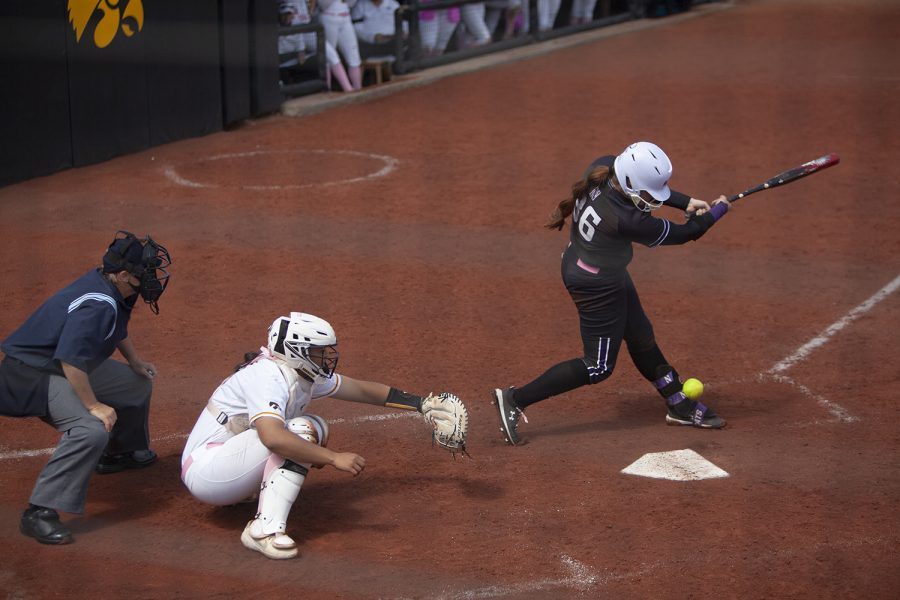Opinion | Invest in softball
Interest in softball is increasing. New fans and the NCAA should invest now.
Northwestern’s Jordyn Rudd hits a foul ball during the softball game on Sunday, April 18th, 2021. Iowa defeated Northwestern 5-2.
May 5, 2021
For the last three years, spring in Iowa has made me feel nostalgic. The weather reminds me of the weekends I spent growing up immersed in the world of softball. Every weekend, my family would spend all day at a tournament, making it home just in time to watch the best NCAA game of the day.
We’ve been advocating to people for years: give softball a chance. Even years removed from my athletic career, I still contend that softball is a unique sport that deserves investment by both fans and the NCAA.
Softball and baseball are considered counterparts, but the sports have significant differences. Critics of baseball tend to lament the slow pace and lengthy game duration (around three hours). A standard softball game could take an hour and a half to two hours, and the pace of the game is quicker.
While interest has risen in softball, popularity in baseball has declined in recent years. For those that don’t take a particular liking to baseball, softball can certainly be more appealing.
If you’ve never seen a game of fastpitch softball, especially at the collegiate level, this is your sign to watch the NCAA Women’s College World Series this year. Dominant hitters and pitchers collide, producing an intense atmosphere that can only be understood by experiencing or watching it.
The 2019 Women’s College World Series (WCWS) saw a 20-percent increase in viewership from the year before, which is a testament to the upward potential for growth in softball. Regular season coverage was up 40 percent from the previous season, meaning more sports fans are already investing in softball. But guess who isn’t?
If your answer was the NCAA, you’re right. It’s easy for the NCAA to put more effort into the men’s basketball championship and blame the disparities on funding due to interest and viewership, but this is not the case for baseball and softball.
At the Division 1 level, softball is a revenue sport. In 2016-2017, 44 softball teams reported revenues of more than $1 million, but not a single team generated that amount in the 2003-2004 season. Softball is also just as popular as baseball, if not more, depending on the year. 2015 was the first year that WCWS viewership was higher than the CWS, with an average of 1.85 million watching softball and 1.4 million watching baseball.
Despite active interest and growth in softball, the championship tournament venue in Oklahoma City only holds 13,000 people while TD Ameritrade in Omaha holds 24,000 for the baseball championship. Since the NCAA’s contract with Hall of Fame Stadium was extended through 2035, extensive upkeep and expansion plans need to be a priority.
A venue unconducive to growth aside, the condensed schedule the NCAA has adopted for the WCWS hinders softball players. The men’s championship spans twelve days while the women’s championship is only seven. Inclement weather is unaccounted for, as well as the health and safety of softball athletes. An adequate amount of rest days is necessary for athletes to maintain their health, and it becomes very difficult for teams to continue throwing their best pitcher day after day.
The inconsistency that seems the most arbitrary is the rule regarding huddling around home plate under COVID-19 protocol. Softball banned huddles at the plate after a home run and is considering it as a permanent rule change. Baseball never made a change to its rules.
While the two sports have differences, the general structure is the same. The culmination of multiple inconsistencies regarding player treatment is disheartening to see as a huge fan of softball. The game is already growing, and the players deserve investment by fans and the governing body of collegiate athletics.
Columns reflect the opinions of the authors and are not necessarily those of the Editorial Board, The Daily Iowan, or other organizations in which the author may be involved.














